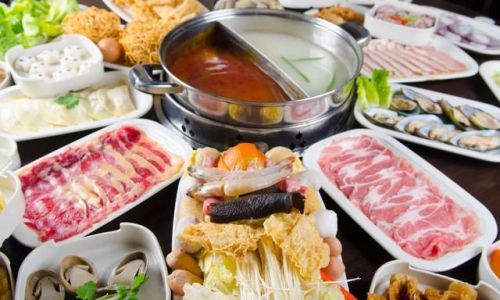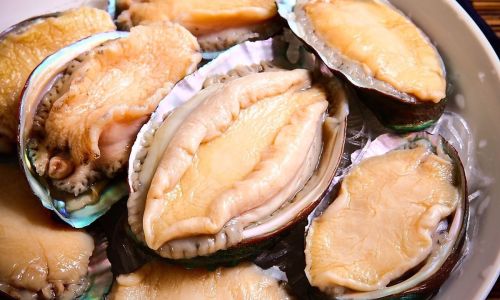Table of content
Hot pot, a beloved culinary tradition enjoyed across Asia and increasingly embraced worldwide, is more than just a meal—it’s an experience. Rooted in communal dining, this interactive feast invites diners to gather around a simmering pot of broth, selecting ingredients, cooking them to perfection, and dipping them into flavorful sauces. For the uninitiated, the process might seem daunting, but mastering the art of hot pot enhances both the flavors and the social joy it brings. This guide will explore the intricacies of hot pot etiquette, ingredient selection, cooking techniques, and cultural significance, ensuring you savor every moment (and every bite).
Understanding Hot Pot: A Brief Overview
Hot pot, also known as steamboat in some regions, traces its origins to ancient China, where it emerged as a practical way to cook food during harsh winters. Today, it has evolved into a global phenomenon, with regional variations reflecting local tastes. From the spicy mala broth of Sichuan to the aromatic tomato-based soups of Beijing, each style offers a unique canvas for culinary creativity. The core concept remains consistent: a shared pot of boiling broth, an array of fresh ingredients, and the freedom to customize flavors.
Step 1: Choosing Your Broth
The broth is the soul of the hot pot. It sets the tone for the entire meal and influences how ingredients absorb flavor. Common broth types include:
- Spicy Sichuan (Mala) Broth: Infused with chili peppers, Sichuan peppercorns, and aromatic spices, this broth delivers a numbing, fiery kick.
- Tomato Broth: Tangy and sweet, it pairs well with seafood and light meats.
- Herbal or Chicken Broth: A mild, nourishing option ideal for those who prefer subtle flavors.
- Kimchi Broth: Popular in Korean-style hot pot, it offers a fermented, spicy-sour base.
- Curry Broth: A fusion favorite, blending coconut milk and spices for a creamy, aromatic profile.
Pro Tip: For indecisive groups, opt for a split pot (yuanyang guo), which divides the vessel into two broths (e.g., spicy and mild).

Step 2: Assembling Your Ingredients
Hot pot’s beauty lies in its versatility. Ingredients cater to all palates, from carnivores to vegans. Here’s a breakdown of staples:
Proteins
- Thinly Sliced Meats: Beef, lamb, and pork are classics. Look for marbled cuts like shabu-shabu beef, which cook quickly.
- Seafood: Shrimp, squid, mussels, and fish balls add briny sweetness.
- Tofu: Silken tofu absorbs broth flavors, while fried tofu puffs provide a chewy texture.
- Offal: For adventurous eaters, tripe, intestine, and tendon offer unique textures.
Vegetables
- Leafy Greens: Napa cabbage, spinach, and bok choy wilt beautifully.
- Root Vegetables: Potatoes, taro, and lotus root add heartiness.
- Mushrooms: Enoki, shiitake, and king oyster mushrooms contribute earthy notes.
- Bean Sprouts: Crisp and refreshing, they balance richer ingredients.
Starches
- Noodles: Udon, rice noodles, or glass noodles soak up broth flavors.
- Dumplings: Frozen or fresh, these are perfect for boiling.
- Rice Cakes: Chewy tteok (in Korean hot pot) or Chinese niangao.
Other Essentials
- Eggs: Crack them into the broth for a silky texture.
- Quail Eggs: Pre-boiled and peeled for convenience.
- Fish Cakes: Colorful, layered slices common in Japanese shabu-shabu.
Step 3: Mastering Cooking Techniques
Cooking in a hot pot requires timing and patience. Overcooking ingredients can lead to rubbery textures, while undercooking poses food safety risks. Here’s a guide to cooking times:
| Ingredient | Cooking Time | Tip |
|---|---|---|
| Thin beef slices | 10–15 seconds | Dip in broth until color changes. |
| Shrimp | 2–3 minutes | Curl when cooked. |
| Mushrooms | 3–4 minutes | Soften and release juice. |
| Tofu | 2–3 minutes | Gentle simmer to avoid breaking. |
| Noodles | 4–5 minutes | Stir to prevent clumping. |
| Dumplings | 5–7 minutes | Float when done. |
Pro Tip: Use a strainer basket or chopsticks to swirl ingredients, ensuring even cooking.
Step 4: Crafting the Perfect Dipping Sauce
A well-balanced sauce elevates flavors. Common bases include:
- Sesame Paste: Rich and nutty, ideal for meat.
- Soy Sauce: Salty and umami-forward.
- Vinegar: Brightens fatty ingredients.
- Chili Oil: Adds heat and depth.
Popular Combinations:

- Sichuan Style: Minced garlic, sesame paste, chili oil, and Sichuan pepper.
- Korean Style: Gochujang (fermented chili paste), sesame seeds, and soy sauce.
- Japanese Style: Ponzu (citrus soy sauce) and grated daikon.
- Thai Style: Lime juice, fish sauce, sugar, and chopped cilantro.
Pro Tip: Adjust ratios to taste—start with a small amount and build gradually.
Step 5: Etiquette and Social Dynamics
Hot pot is inherently social, but etiquette ensures harmony:
- Wait Your Turn: Avoid hogging the pot. Cook small batches and share.
- Use Communal Chopsticks: Reserve personal chopsticks for eating to prevent cross-contamination.
- Mind the Heat: Adjust the flame to maintain a gentle simmer, not a rolling boil.
- Avoid Double-Dipping: Once an ingredient is dipped in sauce, don’t return it to the broth.
- Share the Last Bite: Offer the final piece to others—a gesture of goodwill.
Step 6: Pairing Drinks
The right beverage complements hot pot’s richness:
- Beer: Crisp lagers or wheat beers cut through spice.
- Tea: Jasmine or green tea cleanses the palate.
- Soda: Lemon-lime sodas or plum juice offer sweetness.
- Sake/Soju: Pair well with Korean or Japanese hot pot.
- Water: Always have a pitcher on hand to temper heat.
For First-Timers: Tips to Ease In
- Start Mild: Opt for a tomato or herbal broth if spice intimidates you.
- Observe Others: Mimic how seasoned diners cook ingredients.
- Ask Questions: Don’t hesitate to inquire about unfamiliar items.
- Pace Yourself: Hot pot is a marathon, not a sprint—eat slowly to avoid bloating.
- Embrace Messiness: Splashes and spills are part of the charm!
Health Considerations
While hot pot can be indulgent, mindful choices make it balanced:
- Load Up on Vegetables: Aim for 50% veggies to offset meat.
- Choose Lean Proteins: Opt for chicken or fish over fatty pork.
- Limit Sodium: Use light soy sauce or low-sodium broth.
- Avoid Overeating: The communal nature encourages overindulgence—set limits.
- Watch the Oil: Skim excess fat from spicy broths.
Cultural Significance: More Than Just a Meal
Hot pot transcends cuisine; it’s a symbol of togetherness. The act of gathering around a simmering pot fosters conversation and connection. In Chinese culture, the round pot represents unity, while the communal cooking mirrors shared responsibilities. During festivals like Chinese New Year, hot pot symbolizes prosperity, with ingredients like fish balls (resembling coins) and napa cabbage (symbolizing wealth).

Regional Variations Around the World
- Chongqing Hot Pot: Known for its mala broth and offal selections.
- Cantonese Hot Pot: Emphasizes fresh seafood and clear broths.
- Japanese Shabu-Shabu: Thinly sliced beef dipped in ponzu or sesame sauce.
- Korean Jeongol: A stew-like hot pot with kimchi, meat, and noodles.
- *Thai Suki****: A sweet-and-sour broth with seafood and glass noodles.
Troubleshooting Common Issues
- Broth Too Salty: Dilute with water or unsalted broth.
- Ingredients Sticking: Use a strainer to stir gently.
- Lack of Flavor: Add aromatics like garlic, ginger, or dried shrimp.
- Overcooked Meat: Slice it thinner next time or cook for less duration.
Conclusion: The Joy of Hot Pot
Hot pot is a celebration of flavor, culture, and connection. Whether you’re a seasoned enthusiast or a curious newcomer, mastering its nuances transforms a meal into a memorable event. By selecting the right broth, balancing ingredients, and embracing the communal spirit, you’ll unlock a world of culinary delight. So gather your loved ones, fire up the pot, and let the simmering broth weave its magic—one bite at a time.
Final Pro Tip: After the meal, ask for a bowl of broth with noodles—it’s the chef’s kiss to a perfect hot pot experience!






0 comments